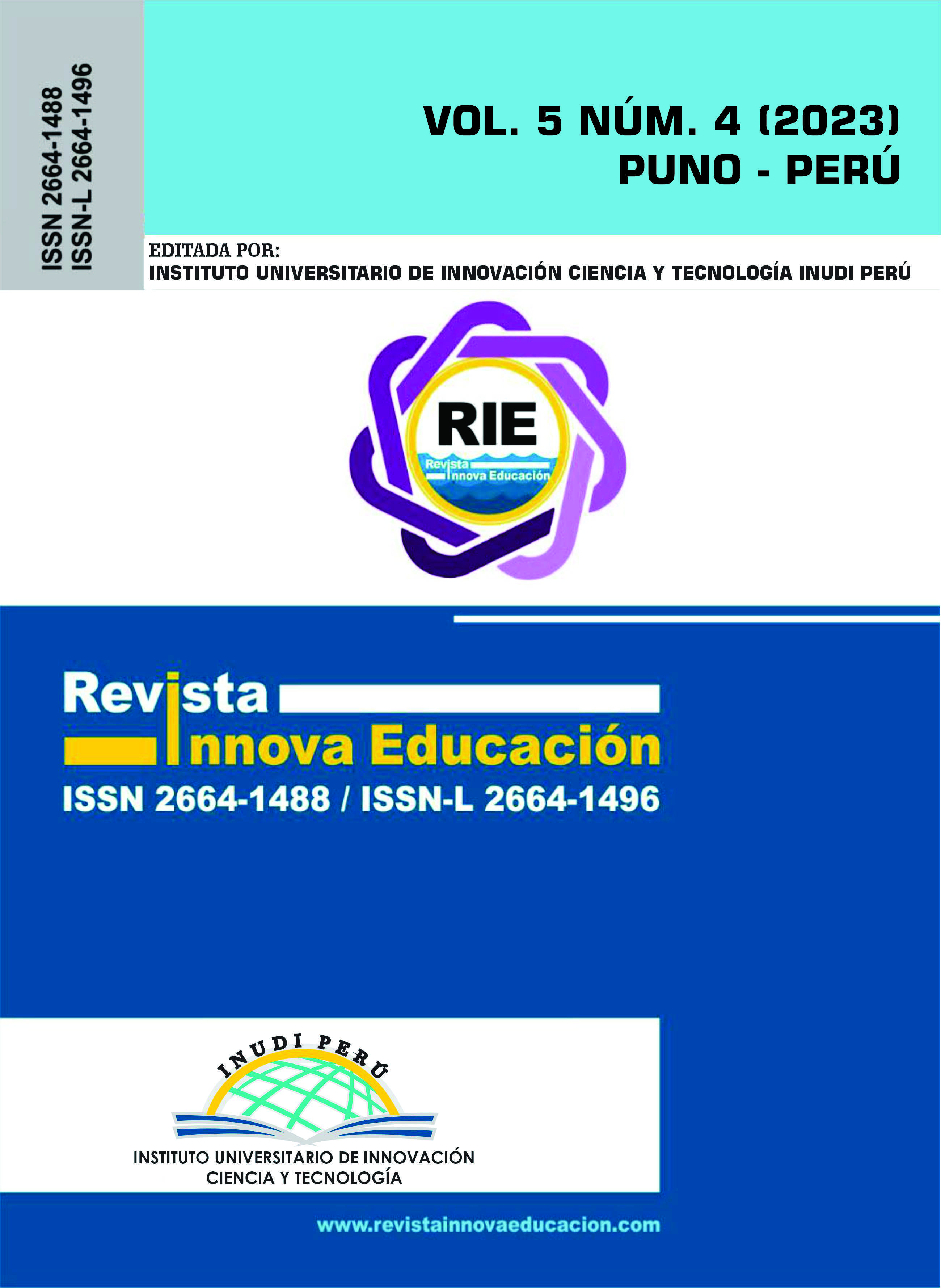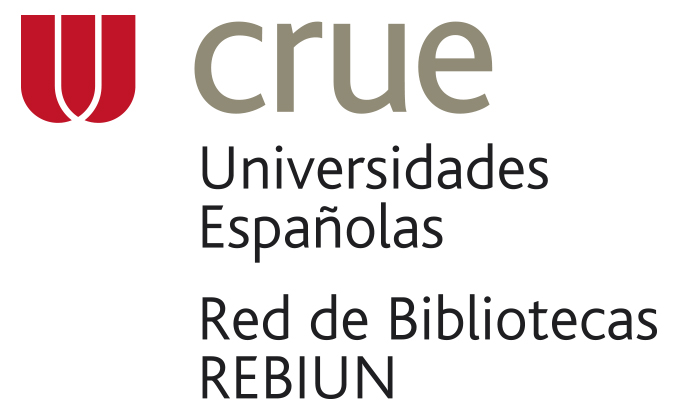Propiedades psicométricas da Escala de Ciberbullying para agressores durante educação virtual
DOI:
https://doi.org/10.35622/j.rie.2023.05v.010Palavras-chave:
Adolescentes, agressão virtual, análise fatorial, cyberbullying, propriedades psicométricasResumo
São analisadas as propriedades psicométricas da Escala de Cyberbullying para agressores em adolescentes peruanos. Trata-se da uma pesquisa não-experimental, quantitativa, transversal, e de desenho instrumental, de qual participaram 1019 adolescentes de ambos os sexos, estudantes de estabelecimentos públicos de ensino médio, cujas idades variaram de 12 a 17 anos (M=14; DP=1,56). Os resultados da análise fatorial confirmatória foram χ2 = 103,725, p = 0,000, CFI = 0,965, TLI = 0,951 e RMSEA = 0,064. Além disso, a validade convergente é reportada, mostrando uma correlação moderada entre o cyberbullying e a ciberagressão (r= 0,548; p= 0,00) e um Coeficiente Ómega = 0,94. Em conclusão, a escala é composta por 8 itens que medem o cyberbullying causado por agressores em um ambiente educacional, seja ele presencial ou virtual.
Referências
Acuña, M. I., Alonso, D., Reyna, C., & Brussino, S. (2022). Estudio de la Escala Breve de Personalidad (EBP) desde la Teoría Clásica de los Test y la Teoría de Respuesta al Ítem. Revista Iberoamericana de Diagnóstico y Evaluación Psicológica, 64(3), 185-199. https://doi.org/10.21865/RIDEP64.3.14 DOI: https://doi.org/10.21865/RIDEP64.3.14
Arnaiz, P., Cerezo, F., Giménez, A., & Maquilón, J. (2016). Conductas de ciberadicción y experiencias de cyberbullying entre adolescentes. Anales de Psicología, 32(3), 761-769. https://www.redalyc.org/pdf/167/16746507017.pdf DOI: https://doi.org/10.6018/analesps.32.3.217461
Ato, M., López, J., & Benavente, A. (2013). Un sistema de clasificación de los diseños de investigación en psicología. Anales de Psicología, 29(3), 1038-1059. https://revistas.um.es/analesps/article/view/analesps.29.3.178511/152221 DOI: https://doi.org/10.6018/analesps.29.3.178511
Bentler, P. (1992). On the fit of models to covariances and methodology. Psychological Bulletin, 112(3), 400-404. https://doi.org/10.1037/0033-2909.112.3.400 DOI: https://doi.org/10.1037//0033-2909.112.3.400
Best, S., Ré, N., Mc Guckin, C., Corcoran, L., & Casasnovas, A. (2017). Retos y desafíos de la adaptación transcultural del cuestionario de ciberagresión en una muestra de estudiantes argentinos. Subjetividad y Procesos Cognitivos, 21(2), 17-41. http://www.scielo.org.ar/pdf/spc/v21n2/v21n2a01.pdf DOI: https://doi.org/10.35670/1667-4545.v21.n2.34389
Bojorquez-Paucar, J., Cáceres-Julcahuanca, L., & Barboza-Palomino, M. (2022). Propiedades psicométricas de la Escala de Personalidad Proactiva en profesores de escuelas de Lima (Perú). CES PSICOLOGÍA, 15(3), 166-179. https://doi.org/10.21615/cesp.6216 DOI: https://doi.org/10.21615/cesp.6216
Brighi, A., Menin, D., Skrzypiec, G., & Guarini, A. (2019). Young, bullying, and connected. Common pathways to cyberbullying and problematic internet use in adolescence. Frontiers in Psychology, 1467, 10. https://doi.org/10.3389/fpsyg.2019.01467 DOI: https://doi.org/10.3389/fpsyg.2019.01467
Buelga, S., & Pons, J. (2012). Agresiones entre Adolescentes a través del Teléfono Móvil y de Internet Aggressions among Adolescents through Mobile Phones and the Internet. Psychosocial Intervention, 21(1), 91-101. https://doi.org/10.5093/in2012v21n1a2 DOI: https://doi.org/10.5093/in2012v21n1a2
Bullying sin Fronteras. (2023). Primer Estudio sobre el Cyberbullying en América Latina. 2022/2023. Bullying sin Fronteras. https://shorturl.at/dhBHK
Byrne, B. (2012). Structural equation modeling with Mplus: Basic concepts, applications, and programming. Psicothema, 24(2), 343-344. https://doi.org/10.4324/9780203807644 DOI: https://doi.org/10.4324/9780203807644
Byrne, B. (2016). Structural equation modeling with AMOS: basic concepts, applications, and programming (Third Edition, Vol. 3). Routledge. https://doi.org/https://doi.org/10.4324/9781315757421 DOI: https://doi.org/10.4324/9781315757421
Calvete, E., Orue, I., Estévez, A., Villardón, L., & Padilla, P. (2010). Cyberbullying in adolescents: Modalities and aggressors’ profile. Computers in human Behavior, 26, 1128-1165. https://doi.org/10.1016/j.chb.2010.03.017 DOI: https://doi.org/10.1016/j.chb.2010.03.017
Cava, M.-J., & Buelga, S. (2018). Propiedades psicométricas de la Escala de Ciber-Violencia en Parejas Adolescentes (Cib-VPA). Revista Suma Psicología, 25, 51-61. https://doi.org/10.14349/sumapsi.2018.v25.n1.6 DOI: https://doi.org/10.14349/sumapsi.2018.v25.n1.6
Cénat, J., Smith, K., Hébert, M., & Derivois, D. (2019). Polyvictimization and cybervictimization among college students from France: The mediation role of psychological distress and resilience. Journal of Interpersonal Violence, 1-20. https://doi.org/10.1177/0886260519854554 DOI: https://doi.org/10.1177/0886260519854554
Cortés, A. (2020). Acoso escolar, ciberacoso y las nuevas tecnologías de la información y la comunicación. Revista Cubana de Medicina General Integral, 36(3), 1-9. https://orcid.org/0000-0001-8061-1845
Elosua, P. (2003). Sobre la validez de los tests. Psicothema, 15(2), 315-321. https://www.redalyc.org/pdf/727/72715225.pdf
Escobar-Pérez, J., & Cuervo-Martínez, Á. (2008). Validez de contenido y juicio de expertos: Una aproximación a su utilización. Avances en Medición, 6, 27-36. https://shorturl.at/ayzO8
Estévez, E., Cañas, E., Estévez, J., & Povedano, A. (2020). Continuity and overlap of roles in victims and aggressors of bullying and cyberbullying in adolescence: A systematic review. International Journal of Environmental Research and Public Health, 7452, 17. https://doi.org/10.3390/IJERPH17207452 DOI: https://doi.org/10.3390/ijerph17207452
Falla, D., Ortega-Ruiz, R., Runions, K., & Romera, E. M. (2022). Why do Victims become Perpetrators of Peer Bullying? Moral Disengagement in the Cycle of Violence. Youth and Society, 54(3), 397-418. https://doi.org/10.1177/0044118X20973702 DOI: https://doi.org/10.1177/0044118X20973702
Ferrando, P. J., Lorenzo-Seva, U., Hernández-Dorado, A., & Muñiz, J. (2022). Decálogo para el Análisis Factorial de los Ítems de un Test. Psicothema, 34(1), 7-17. https://doi.org/10.7334/psicothema2021.456
Fondo de las Naciones Unidas para la Infancia [UNICEF]. (9 de abril de 2019). 1 de cada 3 jóvenes dice haber sufrido ciberacoso. UNICEF Noticias. https://shorturl.at/cDIJL
Fry, D. (2021). Violencia contra niños, niñas y adolescentes en América Latina y el Caribe 2015-2021. Una revisión sistemática. Fondo de las Naciones Unidas para la Infancia (UNICEF), 1-8. https://shorturl.at/abnT3
Garaigordobil, M. (2014). Cyberbullying. Screening de acoso entre iguales: descripción y datos psicométricos. Revista INFAD de Psicología. International Journal of Developmental and Educational Psychology., 4(1), 311-318. https://doi.org/10.17060/IJODAEP.2014.N1.V4.617 DOI: https://doi.org/10.17060/ijodaep.2014.n1.v4.617
Garaigordobil, M. (2018). Bullying y cyberbullying: evaluación, prevención e intervención (1a ed). Editorial Univesitat Oberta de Catalunya. https://materials.campus.uoc.edu/daisy/Materials/PID_00250804/pdf/PID_00250804.pdf
Garaigordobil, M., & Machimbarrena, J. M. (2019). Victimization and Perpetration of Bullying/Cyberbullying: Connections with Emotional and Behavioral Problems and Childhood Stress. Psychosocial Intervention, 28(2), 67-73. https://doi.org/10.5093/PI2019A3 DOI: https://doi.org/10.5093/pi2019a3
Garmendia Larrañaga, M., Jiménez Iglesias, E., & Larrañaga Aizpuru, N. (2019). Bullying y ciberbullying: victimización, acoso y daño. Necesidad de intervenir en el entorno escolar. Revista Española de Pedagogía, 77(273), 295-312. https://doi.org/10.22550/REP77-2-2019-08 DOI: https://doi.org/10.22550/REP77-2-2019-08
Garmendia, M., Jiménez, E., Karrera, I., Larrañaga, N., Casado, M., Martínez, G., & Garitaonandia, C. (2019). Actividades, Mediación, Oportunidades y Riesgos Online de los Menores en la era de la Convergencia Mediática. https://doi.org/10.13140/RG.2.2.24723.02088
Hair Jr., J., Black, W., Babin, B., & Anderson, R. (2010). Multivariate Data Analysis (7th ed.). Pearson Prentice-Hall.
Hernández, A., Muñiz, J., & García, E. (2000). Comportamiento del modelo de respuesta graduada en función del número de categorías de la escala. Psicothema, 12(2), 288-291. https://www.redalyc.org/pdf/727/72797068.pdf
Hernández-Lalinde, J., Espinoza-Castro, J.-F., Peñaloza, M., Rodríguez, J., Chacón, J., Toloza, C., Arenas, M., Carrillo, S., & Bermúdez, V. (2018). Sobre el uso adecuado del coeficiente de correlación de Pearson: definición, propiedades y suposiciones. Archivos Venezolanos de Farmacología y Terapéutica, 37(5), 587-595. https://shorturl.at/lsuU7
Hernández-Sampieri, R., & Mendoza, C. (2018). Metodología de la investigación: Las rutas cuantitativa, cualitativa y mixta. McGraw-Hill Interamericana. https://acortar.link/HRN75j
Hsieh, Y. P. (2020). Parental psychological control and adolescent cyberbullying victimisation and perpetration: the mediating roles of avoidance motivation and revenge motivation. Asia Pacific Journal of Social Work and Development, 30(3), 212-226. https://doi.org/10.1080/02185385.2020.1776153 DOI: https://doi.org/10.1080/02185385.2020.1776153
Hu, L., & Bentler, P. (1999). Cutoff criteria for fit indexes in covariance structure analysis: Conventional criteria versus new alternatives. Structural Equation Modeling: A Multidisciplinary Journal, 6(1), 1-55. https://doi.org/10.1080/10705519909540118 DOI: https://doi.org/10.1080/10705519909540118
Ibarra-Piza, S., Segredo-Santamaría, S., Juárez-Hernández, L., & Tobón, S. (2018). Estudio de validez de contenido y fiabilidad de un instrumento para evaluar la metodología socioformativa en el diseño de cursos. Revista Espacios, 39(53), 1-24. https://www.revistaespacios.com/cited2017/cited2017-24.html
Jordán, J., Vayas, G., López, M., & Saca, M. (2022). Cyberbullying and school mediation in times of pandemic. MEDwave Revista Médica Revisada por Pares, 22(2), eUTA183. https://doi.org/10.5867/MEDWAVE.2022.S2.UTA183 DOI: https://doi.org/10.5867/medwave.2022.S2.UTA183
Katsaras, G., Vouloumanou, E., Kourlaba, G., Kyritsi, E., Evagelou, E., & Bakoula, C. (2018). Bullying and Suicidality in Children and Adolescents Without Predisposing Factors: A Systematic Review and Meta-analysis. Adolescent Research Review, 3, 193-217. https://acortar.link/tIFVY2 DOI: https://doi.org/10.1007/s40894-018-0081-8
Katzer, C., Fetchenhauer, D., & Belschak, F. (2009). Cyberbullying: Who are the victims? A comparison of victimization in internet chatrooms and victimization in school. Journal of Media Psychology, 21(1), 25-36. https://doi.org/10.1027/1864-1105.21.1.25 DOI: https://doi.org/10.1027/1864-1105.21.1.25
Kwan, I., Dickson, K., Richardson, M., MacDowall, W., Burchett, H., Stansfield, C., Brunton, G., Sutcliffe, K., & Thomas, J. (2020). Cyberbullying and children and young people’s mental health: A systematic map of systematic reviews. Cyberpsychology, Behavior, and Social Networking, 23(2), 72-82. https://doi.org/10.1089/CYBER.2019.0370 DOI: https://doi.org/10.1089/cyber.2019.0370
Lacunza, A., Contini, E. N., Caballero, S., & Mejail, S. (2019). Agresiones en las redes y adolescencia: Estado actual en América Latina desde una perspectiva bibliométrica. Investigación y Desarrollo, 27(2), 6-32. DOI: https://doi.org/10.14482/indes.27.2.020.72
Lloret-Segura, S., Ferreres-Traver, A., Hernández-Baeza, A., & Tomás-Marco, I. (2014). El análisis factorial exploratorio de los ítems: Una guía práctica, revisada y actualizada. Anales de Psicología, 30(3), 1151-1169. https://doi.org/10.6018/analesps.30.3.199361 DOI: https://doi.org/10.6018/analesps.30.3.199361
López-Aguado, M., & Gutiérrez-Provecho, L. (2019). Cómo realizar e interpretar un análisis factorial exploratorio utilizando SPSS. REIRE Revista d´Innovació i Recerca en Educació, 12(2). https://doi.org/10.1344/reire2019.12.227057 DOI: https://doi.org/10.1344/reire2019.12.227057
Lucas-Molina, B., Pérez-Albéniz, A., Solbes-Canales, I., Ortuño-Sierra, J., & Fonseca-Pedrero, E. (2022). Bullying, Cyberbullying and Mental Health: The Role of Student Connectedness as a School Protective Factor. Psycosocial Intervention, 31(1), 33-41. https://doi.org/10.5093/pi2022a1 DOI: https://doi.org/10.5093/pi2022a1
Martínez-Ferrer, B., León-Moreno, C., Suárez-Relinque, C., Del Moral-Arroyo, G., & Musitu-Ochoa, G. (2021). Cybervictimization, Offline Victimization, and Cyberbullying: The Mediating Role of the Problematic Use of Social Networking Sites in Boys and Girls. Psychosocial Intervention, 30(3), 155-162. https://doi.org/10.5093/pi2021a5 DOI: https://doi.org/10.5093/pi2021a5
McDonald, R. P. (1999). Test Theory: A Unified Treatment. Lawrence Erlbaum Associates, Inc.
Miglino, J. (2021). Estadísticas Mundiales de BULLYING 2020/2021. Worldwide BULLYING Stats. 2020/2021. ONG Bullying sin Fronteras. https://acortar.link/nGFUj DOI: https://doi.org/10.1007/978-3-319-19650-3_301258
Ministerio de Educación. (2021, mayo). Plataforma SíseVe reporta casos de ciberacoso escolar durante la pandemia. Plataforma digital única del Estado Peruano. https://acortar.link/zlQUJe
Ministerio de Salud. (2022). El bullying escolar afecta las habilidades sociales y la autoestima de los niños con graves repercusiones en su vida adulta. Plataforma digital única del Estado Peruano. https://acortar.link/0ma58J
Ordóñez, M., & Prado-Cabrera, K. (2019). Bullying y cyberbullying escolar en niños y jóvenes adolescentes: un estudio de caso. Maskana, 10(2), 32-41. https://doi.org/10.18537/MSKN.10.02.04 DOI: https://doi.org/10.18537/mskn.10.02.04
Ortega-Ruiz, R., Del Rey, R., & Casas, J. A. (2016). Evaluar el bullying y el cyberbullying validación española del EBIP-Q y del ECIP-Q. Psicología Educativa, 22(1), 71-79. https://doi.org/10.1016/J.PSE.2016.01.004 DOI: https://doi.org/10.1016/j.pse.2016.01.004
Otzen, T., & Manterola, C. (2017). Técnicas de muestreo sobre una población a estudio. Int. J. Morphol, 35(1), 227-232. https://scielo.conicyt.cl/pdf/ijmorphol/v35n1/art37.pdf DOI: https://doi.org/10.4067/S0717-95022017000100037
Pérez, E., & Medrano, L. (2010). Análisis factorial exploratorio: Bases conceptuales y metodológicas. Revista Argentina de Ciencias del Comportamiento, 2(1), 58-66. www.psyche.unc.edu.ar/racc
R Core Team. (2020). R: A language and environment for stadistical computing. [Programa para computación estadística y gráficos]. https://www.r-project.org/
Redondo, J. (2023). Variables asociadas al fenómeno del ciberbullying en adolescentes colombianos. Revista de Psicología, 41(1), 219-239. https://doi.org/10.18800/psico.202301.009 DOI: https://doi.org/10.18800/psico.202301.009
Resett, S., & Gámez-Guadix, M. (2018). Propiedades psicométricas del Cuestionario de Ciberbullying en una muestra de adolescentes argentinos. Universitas Psychologica, 17(5), 1-12. https://doi.org/10.11144/Javeriana.upsy17-5.ppcc DOI: https://doi.org/10.11144/Javeriana.upsy17-5.ppcc
Salas, E., & Escurra, M. (2014). Construcción y validación del cuestionario de adicción a redes sociales (ARS). LIBERABIT Revista Peruana de Psicología, 20(1), 125-143. https://www.redalyc.org/articulo.oa?id=68631260007
Sánchez-Meca, J., López-Pina, J. A., & López-López, J. A. (2008). Una revisión de los estudios meta-analíticos de generalización de la fiabilidad / A review of the meta-analytic studies of reliability generalization. Escritos de Psicología, 2(1), 110-121. https://scielo.isciii.es/pdf/ep/v2n1/original10.pdf DOI: https://doi.org/10.24310/espsiescpsi.v2i1.13365
Segura, L., Estévez, J. F., & Estévez, E. (2020). Empathy and emotional intelligence in adolescent cyberaggressors and cybervictims. International Journal of Environmental Research and Public Health, 17(13), 1-14. https://doi.org/10.3390/ijerph17134681 DOI: https://doi.org/10.3390/ijerph17134681
SíseVe. (2020). Contra la violencia escolar. Ministerio de Educación del Perú. http://www.siseve.pe/Web/
Skilbread-Fjeld, S., Reme, S., & Mossige, S. (2020). Cyberbullying involvement and mental health problems among late adolescents. Cyberpsychology, 14(1), 1-16. https://doi.org/10.5817/CP2020-1-5 DOI: https://doi.org/10.5817/CP2020-1-5
Tabachnick, B. G., & Fidell, L. S. (2019). Using Multivariate Statistics (Seventh Edition). Pearson. https://lccn.loc.gov/2017040173
Unión Internacional de Telecomunicaciones [UIT]. (2020). Directrices sobre la protección de la infancia en línea para los encargados de formular políticas 2020. En ITU Publicaciones. https://acortar.link/T5thZu
Verdejo, M., Martín, M., Morcillo, J., Quesada, M., Muñoz, M., Cortés, J., Martínez, M., & Flores, J. (2015). Ciberacoso y violencia de género en redes sociales. Análisis y herramientas de prevención (1a ed). Universidad Internacional de Andalucía. Servicio de Publicaciones. https://acortar.link/ummaR9
Publicado
Edição
Seção
Licença
Copyright (c) 2023 Rossana Reátegui-Ramírez, Ruth Cabrera-Camacho, Joel Palomino-Ccasa (Autor/a)

Este trabalho está licenciado sob uma licença Creative Commons Attribution 4.0 International License.



























